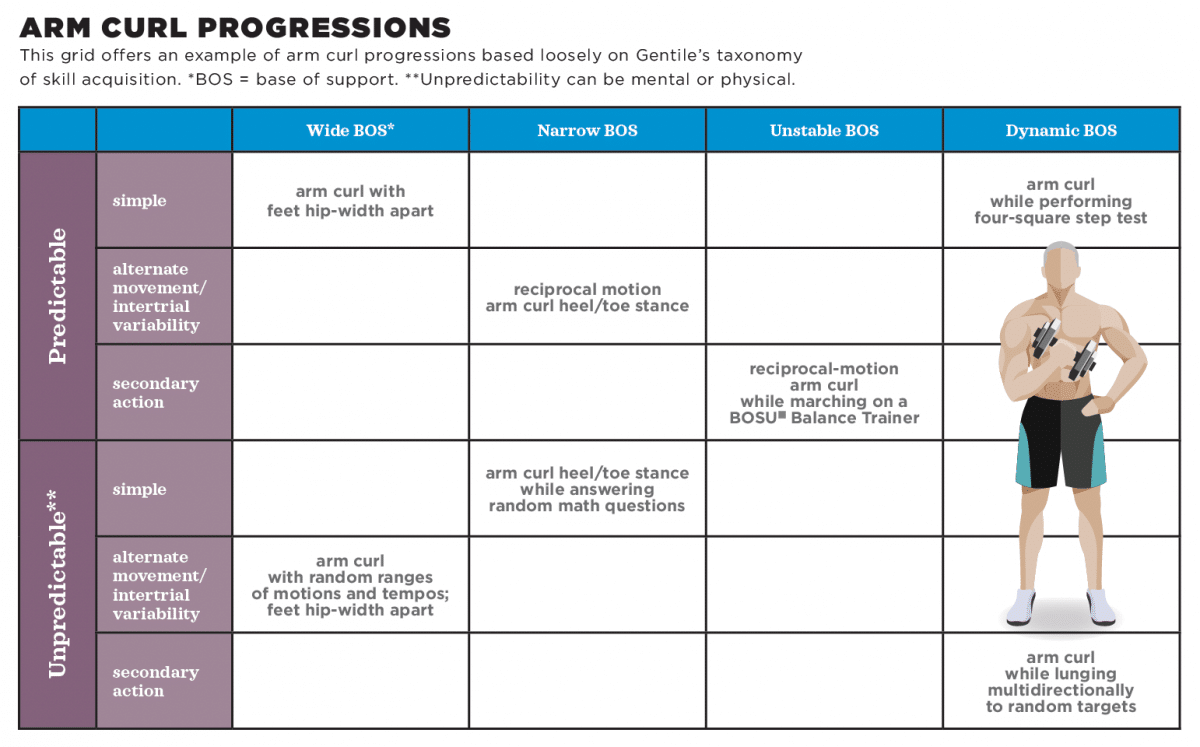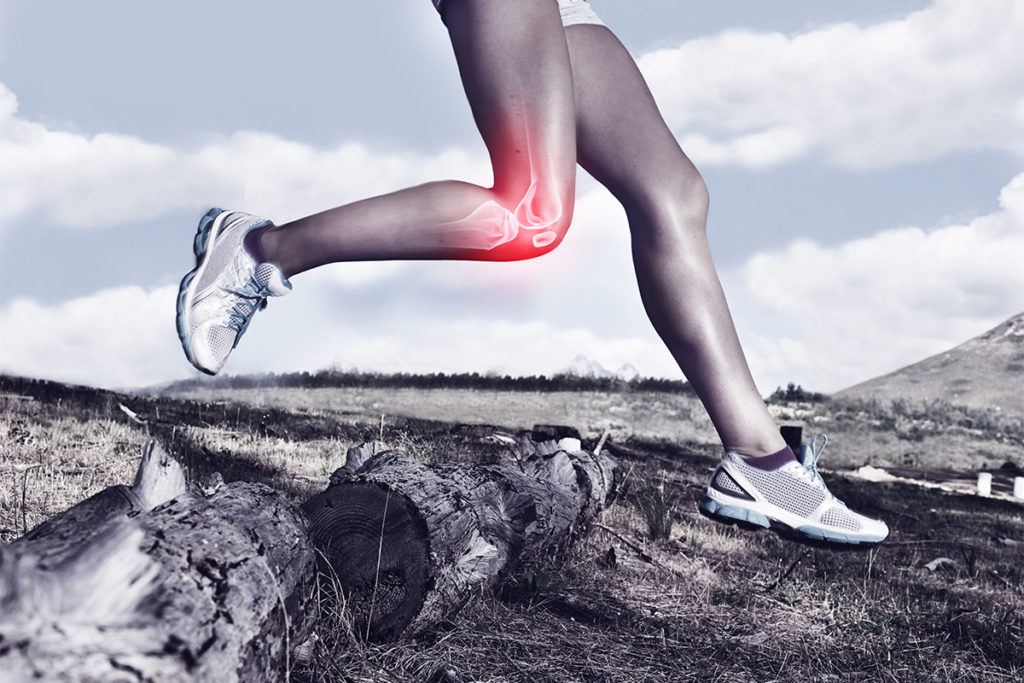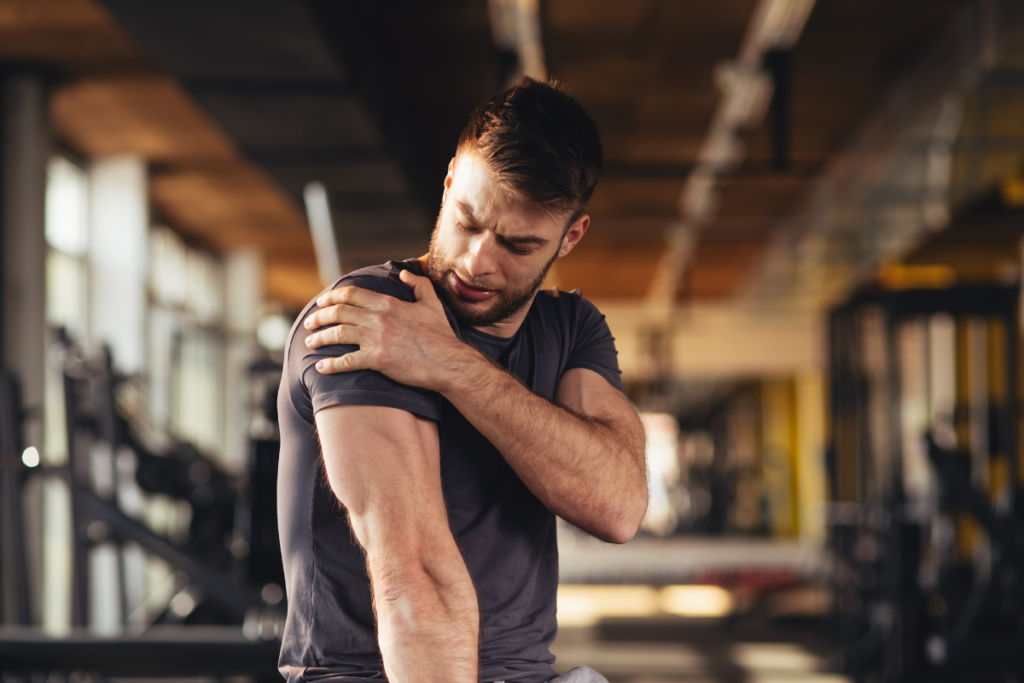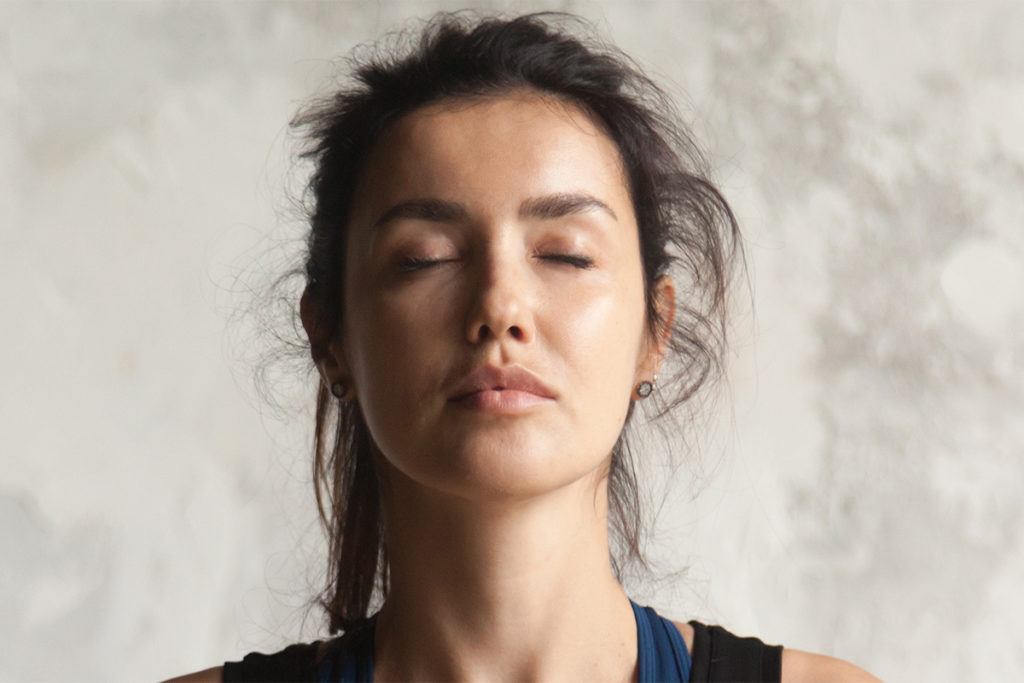A Defense Against Age-Related Slowing
The right kind of exercise can limit the biological damage created by a loss of function.

Age-related slowing of movement plays a critical role in the declining health of older adults. Slowing typically begins after age 62 with a marked decrease in gait velocity. It can lead to dysfunction, poor mental and physical health, a loss of independence and higher risk of mortality.
In older adults, fatal falls due to dysfunction more than doubled between 2000 and 2012, while nonfatal falls increased by 23%. Direct medical costs of fatal falls jumped more than 200%, while medical costs from nonfatal falls rose 58% (Burns, Stevens & Lee 2016). Clearly, age-related slowing goes beyond the risks for individuals, creating serious financial implications for the community.
As a fitness pro working with older adults, you need to understand the physiological changes that lead to age-related slowing. This knowledge will help you create effective exercise programs for older exercisers.
Exercise Recommendations for Age-Related Slowing
Optimal exercise programming can decelerate the degenerative biology of aging. First, make sure you understand the physiological changes of aging (see “Reaction Time and Brain Structural Changes” and “Neuromuscular Changes With Aging”). Then you can start focusing on motor-learning techniques to combat the physiological causes of age-related slowing. Developing motor-learning skills builds new cerebral connections, promotes development of new neural pathways and encourages the reinnervation of motor units—neurons and muscle that work together to produce motion. Power training is also very important, as function happens during quick movements, such as catching yourself when you fall.
Incorporating exercises that require the development of new motor skills leads to functional reorganization and the creation of new synaptic connections in the cerebrum (Wei et al. 2014). Moreover, exercises that emphasize skill development and movement complexity can increase function and decrease reaction times. Skill training has also been associated with increased neuromuscular drive and total neuromuscular activation, which can lead to faster, more powerful movements.
Skill development within an exercise program may be addressed separately (Islam et al. 2004) or in combination with strength and power training (Josephson & Williams 2017). Progression of skill-related exercises should be based loosely on the stability and complexity elements of Gentile’s taxonomy (Gentile 1987) (see “Arm Curl Progressions,” below). The taxonomy’s stability elements include body stability in early progressions and body transport in later progressions. Complexity elements begin with a closed, predictive environment and progress to an open, unpredictive environment.
Within these environments, tasks can have either no intertrial variability (all performed the same way) or intertrial variability (performed using multiple methods).
A loose application of Gentile’s taxonomy in a fitness setting can take several forms. Stability progressions should begin with a wide, stable base of support (BOS) and narrow as the client becomes more proficient. Unstable support apparatuses, like a rocker board or BOSU® Balance Trainer, should be added after the client masters a narrow BOS. A dynamic BOS can be added after the narrow base has been mastered.
Complexity progressions should begin with simple exercises in a predictable setting. The exercises can be progressed by adding alternating movements or intertrial variability, then adding secondary actions. Exercises can be further progressed by having the client repeat the same progressions in an open environment. The environment can be progressed by adding more unpredictable elements. This application of the overload principle creates an ongoing state of motor learning.
Give careful consideration to the timing of progressions. Motor activity without skill development creates new blood vessels but does not create new neural synapses. Therefore, ensure that the client has mastered a new skill before progressing.
SAMPLE EXERCISES
The chart below provides sample progressions for a combined skill development and strength training exercise—a standing dumbbell supinated arm curl. Each category has multiple possible progressions. For example, a narrow BOS can be feet together, a heel/toe stance or a single-leg stance. Resistance level or movement velocity progressions can be intermixed with complexity/stability progressions to challenge strength and power.
The neuromuscular response to age-related slowing, which in part means a decrease in power, stems from dynapenia (Clark & Manini 2008), or a loss of fast-fatiguing/power motor units and a restructuring of muscle fiber. The literature tells us that power training is more effective than strength training in improving performance and function in older adults (Hazell, Kenno & Jakobi 2007). While one research group (Fiatarone et al. 1990) found that heavy resistance strength training increased maximum lower-extremity strength in frail, older adults three- to fourfold, increases in strength create a ceiling on rate-dependent functions (Buchner et al. 1996) such as gait speed.
High-speed, low-resistance power training is an effective way to change and maintain power motor units (Häkkinen et al. 2001) and to help older adults regain balance and function (Orr et al. 2006). Power-based programs should be performed at resistance levels less than 50% of one-repetition maximum, and they need not be performed to fatigue for functional improvement. Progressions can be based on a plateau of the number of repetitions during a timed set or on a 1-RM test every 2 weeks with resistance level adjusted accordingly.
Choose specific exercises based on the individual client’s wants and needs. Rather than dictating the exercises to be done, base your programming methods on power and skill development to better combat age-related movement slowing.
Exercise Puts the Brakes on Age-Related Slowing
Proper exercise is crucial to limiting the effects of age-related changes to human biology. Focus on exercises that require skill development, which helps the brain create new cerebral synapses. Apply the overload principle by adding complexity to movements, and subtract stability to improve muscular function.
Moreover, work on integrating high-speed, low-resistance power exercises that stimulate the use of fast-fatiguing motor units, which may initiate the re-innervation of denervated type II muscle fibers. All these efforts encourage the brain and body’s neuromuscular systems to preserve strength and slow the pace of aging.
This grid offers an example of arm curl progressions based loosely on Gentile’s taxonomy of skill acquisition. *BOS = base of support. **Unpredictability can be mental or physical.

A LOOK AT STIMULUS AND RESPONSE
Reaction time is a useful gauge of a client’s ability to process information associated with movement. Different types of reaction times apply to different areas of the brain:
- SIMPLE REACTION TIME (SRT)(1 stimulus, 1 response) measures stimulus detection in the individual cortices (visual stimulus = visual cortex, auditory stimulus = temporal lobe, touch = ventrobasal complex) and the movement pathways.
- DISJUNCTIVE REACTION TIME (DRT)(2 stimuli, 1 response) requires a stimulus to be detected and identified. DRT occurs in the somatosensory and parietal cortices of the brain. This is also called a “go/no-go” task: Based on the stimulus, we either respond or do nothing.
- CHOICE REACTION TIME (CRT) (multiple stimuli, multiple responses) encompasses the full information-processing system: stimulus detection, identification and response selection. Response selection for a cued task occurs in the prefrontal cortex.
A rich body of literature has investigated reaction time in older adults. One study tested auditory reaction times of 1,265 people aged 17–96 and found that SRTs and DRTs increase with age, with disjunctive rising more than simple (Fozard et al. 1994) These results indicate a slight decline in the ability to detect a stimulus and a greater decline in the ability to correctly identify the stimulus.
Everybody’s CRT typically increases along with the number of potential stimuli and responses, but older adults show a greater increase in reaction time than young adults (Simon & Pouraghabagher 1978), indicating that older people have difficulty with response selection. Reaction-time research points to structural changes in the brain that can affect decision-making and subsequent movement speeds. Results of reaction-time research imply that brain changes are specifically associated with identifying a stimulus and selecting a response. Brain-imaging studies concur, showing in older adults an overall decrease in cerebral gray matter, including the somatosensory areas, and a more specific decrease in size and functional restructuring of the prefrontal cortex.
WHY WE FACE SLOWING AND A LOSS OF POWER
Age-related slowing reflects changes in the neuromuscular system. Beginning at about age 60, humans encounter a string of structural changes causing a loss of power (ability to generate force quickly) and a loss of functional mobility. Losing power with age, called dynapenia (Clark & Manini 2008), begins with neural changes to motor units (alpha motor neurons and all the muscle fibers attached to them). Eventually, dynapenia advances to changes in muscle structure.
It is thought that the neuromuscular changes from age-related slowing result from denervation of fast-fatiguing motor units (neural input is lost). Research on people aged 12–79 found that while denervation occurs across all ages, it accelerates after age 60 (Stalberg & Fawcett 1982).
Lack of neural input causes a host of dynapenia-related changes. Without this input, fast-fatiguing motor units cannot produce force. This leads to a process called collateral sprouting, where nearby motor neurons, typically the slow-oxidative/endurance type, branch out to attach to denervated muscle fiber. Sprouting reduces the number of fast-fatiguing motor units and increases the overall size of slow-oxidative motor units (Kadhiresan, Hassett & Faulkner 1996).
Muscle structures also change as their contractile properties adapt to the new reality of slow-oxidative neural inputs (Short et al. 2005). Muscle fiber shifts from type IIa and IIx (fast twitch) to type I (slow twitch). Type IIx fibers have a greater diameter than type I fibers, so the cross-sectional area of the muscle shrinks amid the loss of the fast-fatiguing motor units and type IIx fibers.
Meanwhile, collateral sprouting of the slow-oxidative motor units increases their size but not their number. These structural changes typically cause what was once a mosaic pattern of muscle fibers to become large clumps of type I muscle fiber and much smaller amounts of type II fibers throughout the muscle.
Though cerebral changes slow the processing associated with movement, neuromuscular changes account for a loss of the power necessary for functional mobility. Denervation and collateral sprouting reduce fast-fatiguing motor units and shift the contractile properties of muscle fiber. As people age, these neuromuscular changes cause both slowing and a loss of power.
References
Buchner, D.M., et al. 1996. Evidence for a non-linear relationship between leg strength and gait speed. Age and Ageing, 25 (5), 386–91.
Burns, E.R., Stevens, J.A., & Lee, R. 2016. The direct costs of fatal and non-fatal falls among older adults—United States. Journal of Safety Research, 58, 99–103.
Clark, B.C., & Manini, T.M. 2008. Sarcopenia ≠ dynapenia. Journal of Gerontology: Medical Sciences, 63A (8), 829–34.
Fiatarone, M.A., et al. 1990. High-intensity strength training in nonagenarians: Effects on skeletal muscle. JAMA, 263 (22), 3029–34.
Fozard, J.L., et al. 1994. Age differences and changes in reaction time: The Baltimore Longitudinal Study of Aging. Journal of Gerontology: Psychological Sciences, 49 (4), 179–89.
Gentile, A.M. 1987. Skill acquisition: Action, movement, and the neuromotor process. In J.H. Carr & R.D. Shepherd (Eds.), Movement Science: Foundations for Physical Therapy in Rehabilitation (pp. 93–154). Rockville, MD: Aspen Publishers.
H├ñkkinen, K., et al. 2001. Changes in electromyographic activity, muscle fibre and force production characteristics during heavy resistance/power strength training in middle-aged and older men and women. Acta Physiologica Scandinavica, 171 (1), 51–62.
Hazell, T., Kenno, K., & Jakobi, J. 2007. Functional benefit of power training for older adults. Journal of Aging and Physical Activity, 15 (3), 349–59.
Islam, M.M., et al. 2004. Effects of combined sensory and muscular training on balance in Japanese older adults. Preventive Medicine, 39 (6), 1148–55.
Josephson, M.D., & Williams, J.G. 2017. Functional-strengthening: A pilot study on balance control improvement in community-dwelling older adults. Montenegrin Journal of Sports Science and Medicine, 6 (2), 75–78.
Kadhiresan, V.A., Hassett, C.A., & Faulkner, J.A. 1996. Properties of single motor units in medial gastrocnemius muscles of adult and old rats. Journal of Physiology, 493 (2), 543–52.
Orr, R., et al. 2006. Power training improves balance in healthy older adults. Journal of Gerontology: Medical Sciences, 61 (18), 78–85.
Short, K.R., et al. 2005. Changes in myosin heavy chain mRNA and protein expression in human skeletal muscle with age and endurance exercise training. Journal of Applied Physiology, 99 (1), 95–102.
Simon, J.R., & Pouraghabagher, A.R. 1978. The effect of aging on the stages of processing in a choice reaction time task. Journal of Gerontology, 33 (4), 553–61.
Stalberg, E., & Fawcett, P.R. 1982. Macro EMG in healthy subjects of different ages. Journal of Neurology, Neurosurgery, and Psychiatry, 45, 870–78.
Wei, G.X., et al. 2014. Tai chi chuan optimizes the functional organization of the intrinsic human brain architecture in older adults. Frontiers in Aging Neuroscience, 6, 74.
Micah Josephson, PhD
I have been a Health and Fitness professional since 2002. I work primarily with older adults and special populations such as people with chronic disease and/or injury. I am currently a Ph.D. candidate doing research on neuromuscular excitation varies based on movement/contraction velocity and relating that back to functional mobility in older adults and people with Parkinson's disease. When not working on my dissertation, I can be found hanging out with my dogs.




